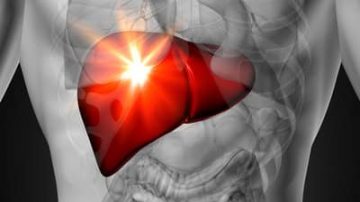Staph aureus bacteremia (SAB) includes both MRSA and MSSA bacteremia and carries an attributable mortality rate of up to 25%. As such, it is important to determine ways in which this mortality rate can be reduced. The evidence base for…
Read MoreThis systematic review examined 97 studies and over 51 million patients admitted to the hospital on either a weekday or a weekend. The study revealed that patients admitted on a weekend (Friday evening to Monday morning) has about a 20%…
Read MoreThere have been a few studies that have demonstrated that bedside ultrasound has a high sensitivity and specificity for fracture diagnosis. Researchers in Italy compared the accuracy of US to that of plain radiography (the gold standard) in 204 children…
Read MoreMore Articles – Emergency Procedures, Featured, Mechanical Ventilation, medical procedures, Procedural Sedation
Researchers assessed the incidence of sedation-related serious adverse events (SAEs) and risk factors for them in a prospective cohort study of children ≤18 years of age presenting to six Canadian pediatric emergency departments (EDs) and requiring sedation for painful procedures.…
Read MoreChoosing Wisely is an initiative by the American Board of Internal Medicine that solicits evidence-based recommendations by other specialty associations to identify tests or procedures in their field which are unnecessary. The following are a set of five recommendations that…
Read MorePhysicians and healthcare workers have long known that certain articles of clothing can act as fomites with the potential of spreading infection. The best studied articles of clothing and equipment that can contribute to this spread include neckties, scarfs, stethoscopes,…
Read MoreBeta2-agonists and anticholinergics are the initial bronchodilators Prednisone 1 mg/kg/day (up to 60 mg/day) or steroid equivalent for moderate-severe exacerbations x 5-7 days Antibiotics indicated for moderate-severe exacerbations with pulmonary infiltrate or sputum purulence –procalcitonin level >0.25 ng/mL supports antibiotic…
Read MoreThis study was an observational cohort study of adult patients who had an in-hospital cardiac arrest between 2000 through 2014. A US-based multicenter registry of in-hospital cardiac arrest was studied and included 108,079 adult patients at 668 hospitals. Two…
Read MoreThe overall incidence of extubation failure is about 15%, but this failure rate may be increased in patients with high risk characteristics. Patients who have prolonged mechanical ventilation, those with high cuff pressures, poor cuff leaks, and those who have…
Read MoreOut-of-hospital cardiac arrests (OHCA) have a survival rate of only 8-10%. The most critical factors for patient survival is the early administration of good bystander CPR and early defibrillation in shockable rhythms. Currently, defibrillators are transported to OHCA victims only…
Read MoreIn many hospitals, blood cultures have become a reflexive habit for patients presenting to the ER with any suspected infection. This was, in part, due to the inappropriate addition of routine blood cultures as a core measure in 2001 by…
Read MoreThe optimal treatment of portal vein thrombosis in patients with cirrhosis has been a topic of debate for quite some time. To this date there have been no large prospective, randomized controlled trials to help guide management in these patients. …
Read MorePulmonary embolism (PE) is one of the most difficult to diagnose and potentially fatal disorders in medicine. Because of this, CT pulmonary angiograms (CTPA) are over utilized so as to not miss this potentially fatal problem. There are three ways…
Read MoreThere is now very convincing evidence to support a restrictive transfusion threshold — hemoglobin, <7 g/dL — for most critically ill patients that is supported by guidelines from the American Association of Blood Banks and the TRICC and FOCUS trials. …
Read MoreThe International Ascites Club (IAC) recently defined Stage 1 acute kidney injury (AKI) for cirrhosis as an acute increase in serum creatinine (SCr) by ≥0.3 mg/dl or by more than 50% in <48 h from a stable value within 3 months. North…
Read MoreCategories
- ACLS (1)
- Arterial line (33)
- Cardiovascular diseases (77)
- Central line (55)
- Chest Tube (39)
- Dermatology (4)
- Emergency Procedures (139)
- Endocrinology (6)
- Endotracheal Intubation (36)
- Events (24)
- FAST Exam (12)
- Featured (113)
- Featured Procedure (42)
- Gastrointestinal diseases (32)
- Ginecology (3)
- Glidescope Intubation (21)
- Hematology (33)
- Hospital Procedures (85)
- Infections (32)
- Intraosseous line (8)
- King Tube (27)
- Laryngeal Mask Airway (18)
- Lumbar Puncture (36)
- Mechanical Ventilation (34)
- Medical General (95)
- medical procedures (258)
- Needle Decompression (6)
- Nephrology (11)
- Neurological diseases (12)
- Oncology (4)
- Paracentesis (32)
- Pericardiocentesis (3)
- Procedural Sedation (19)
- Respiratory diseases (85)
- RUSH Exam (8)
- Thoracentesis (37)
- Traumatology (24)
- Travel (27)
- Ultrasound-Guided Peripheral IV (13)













